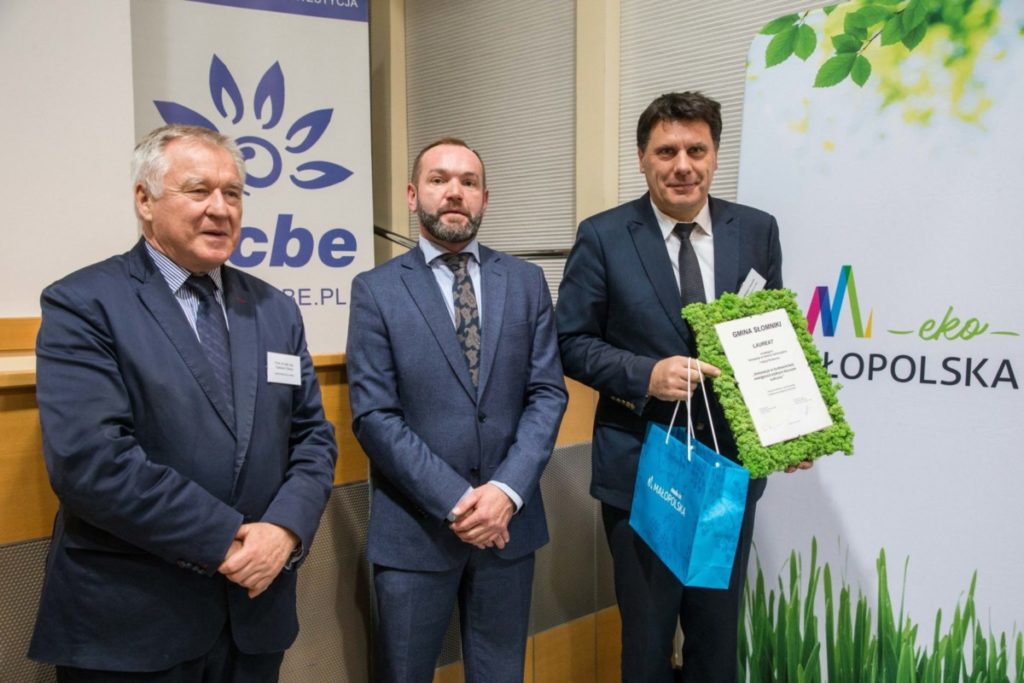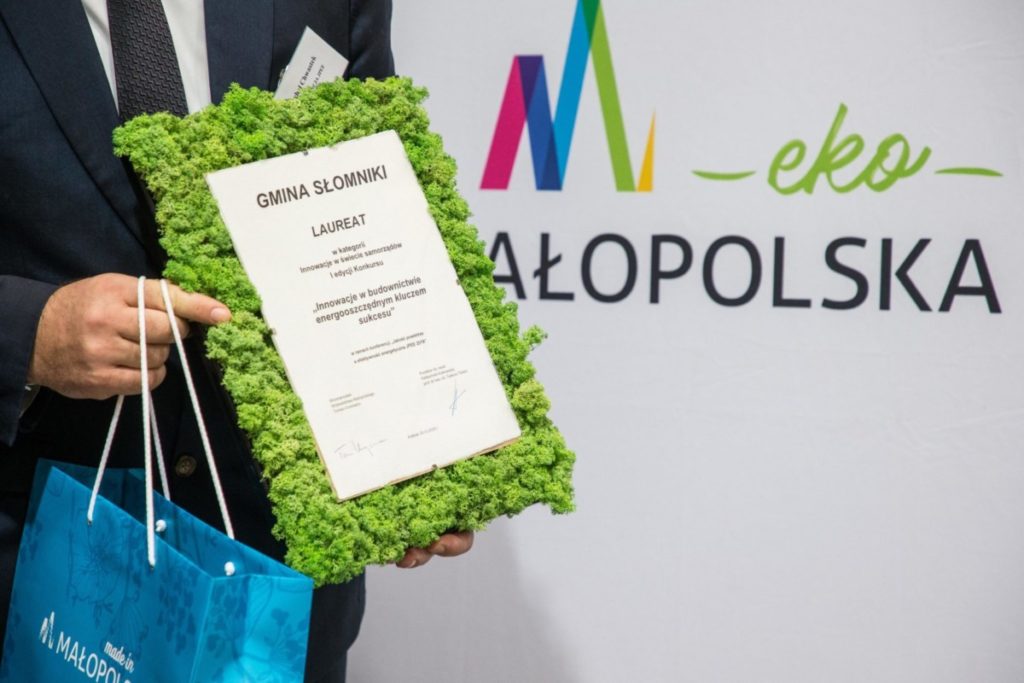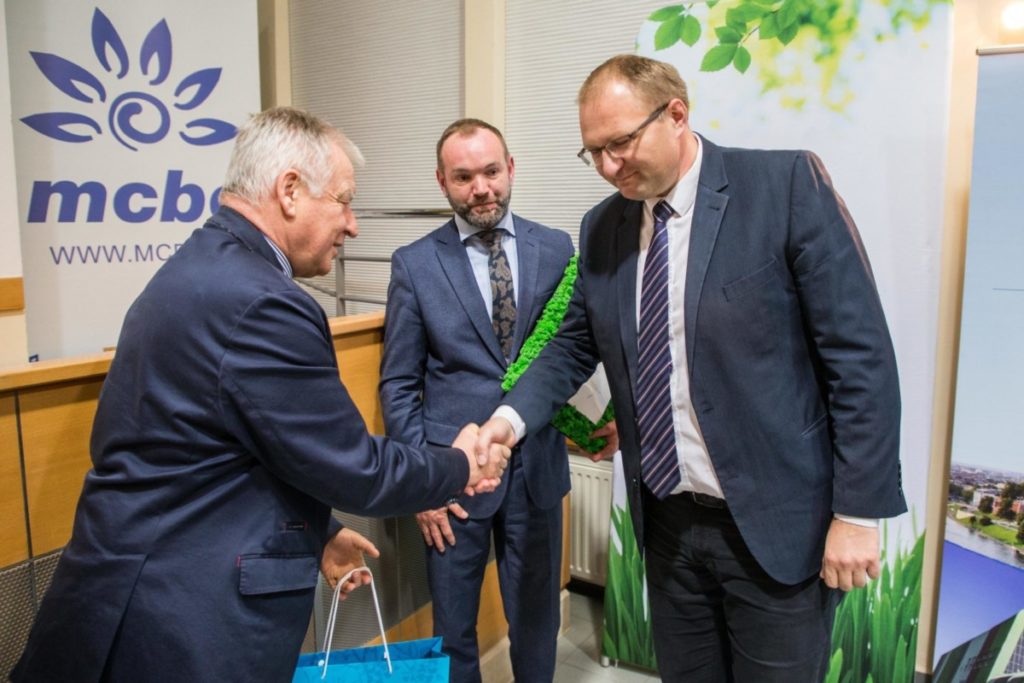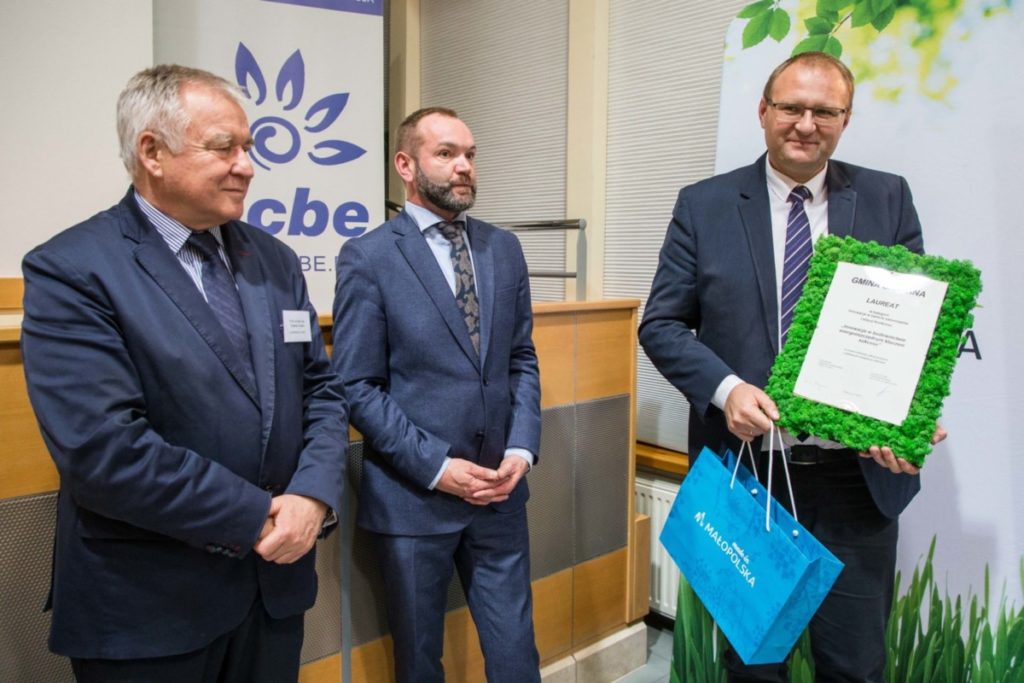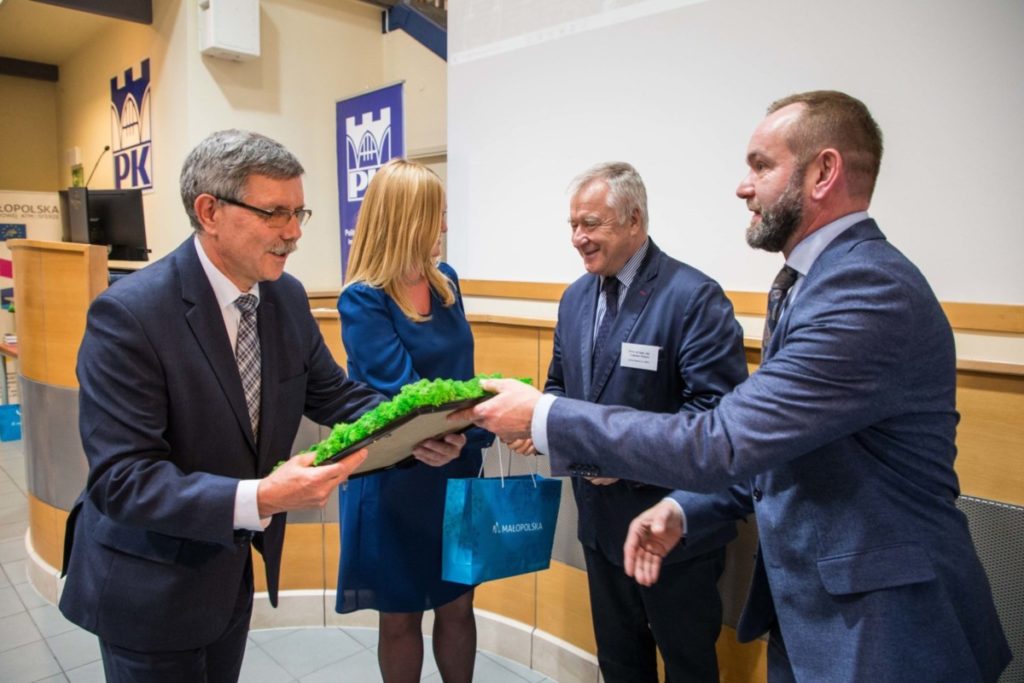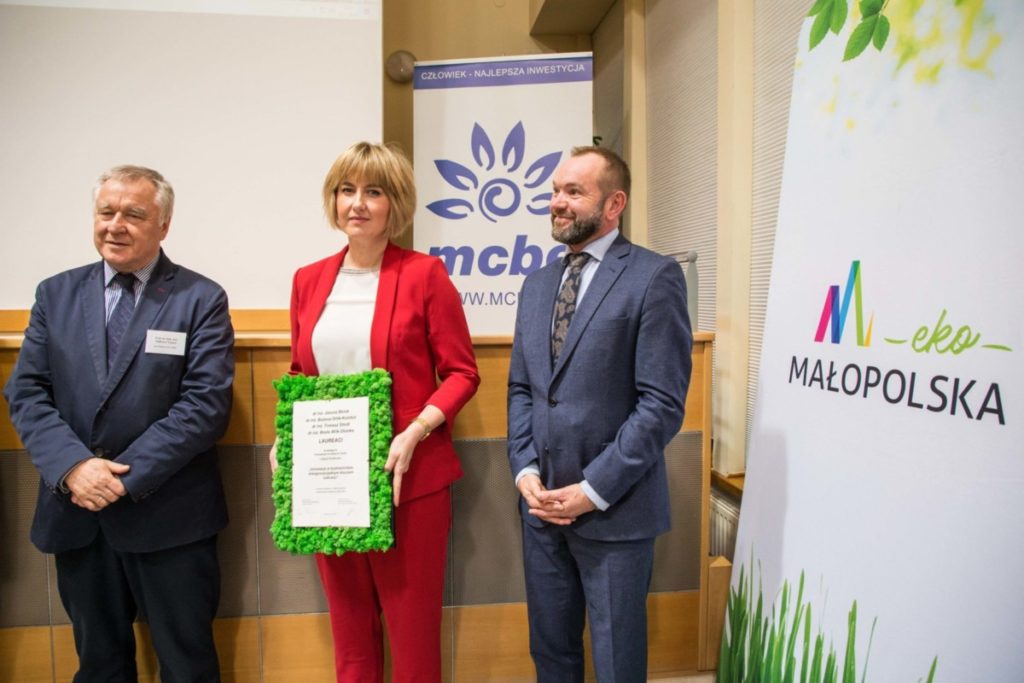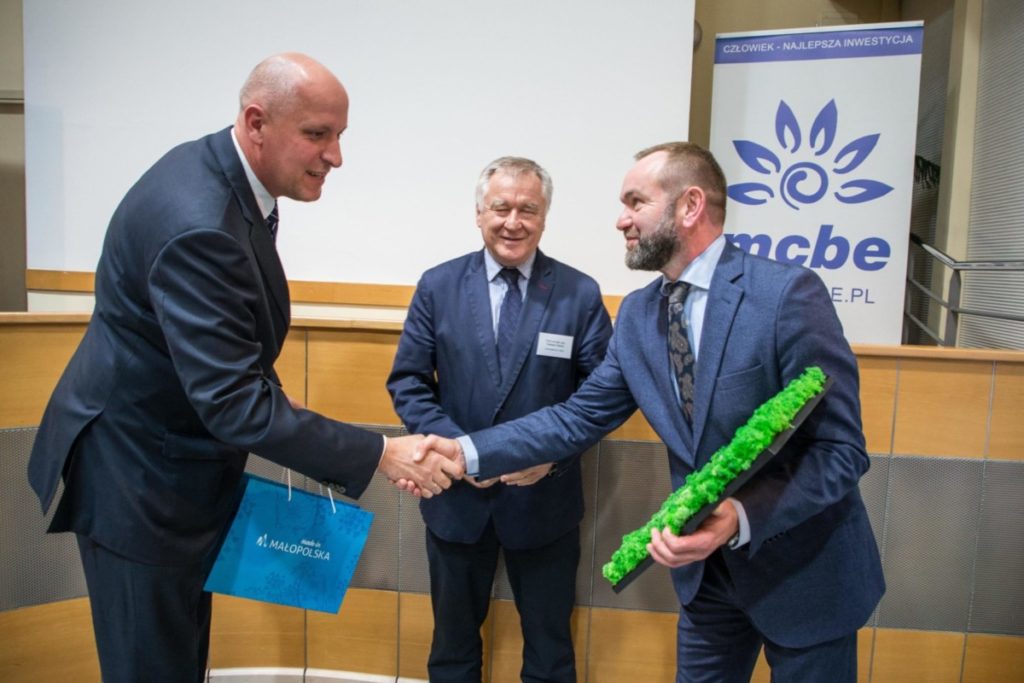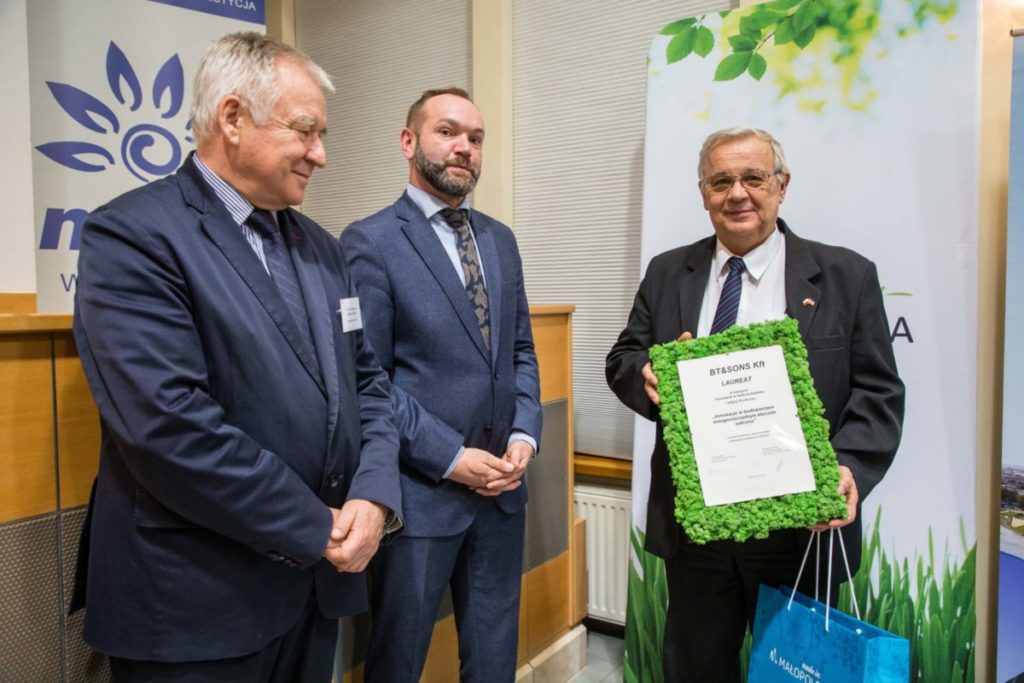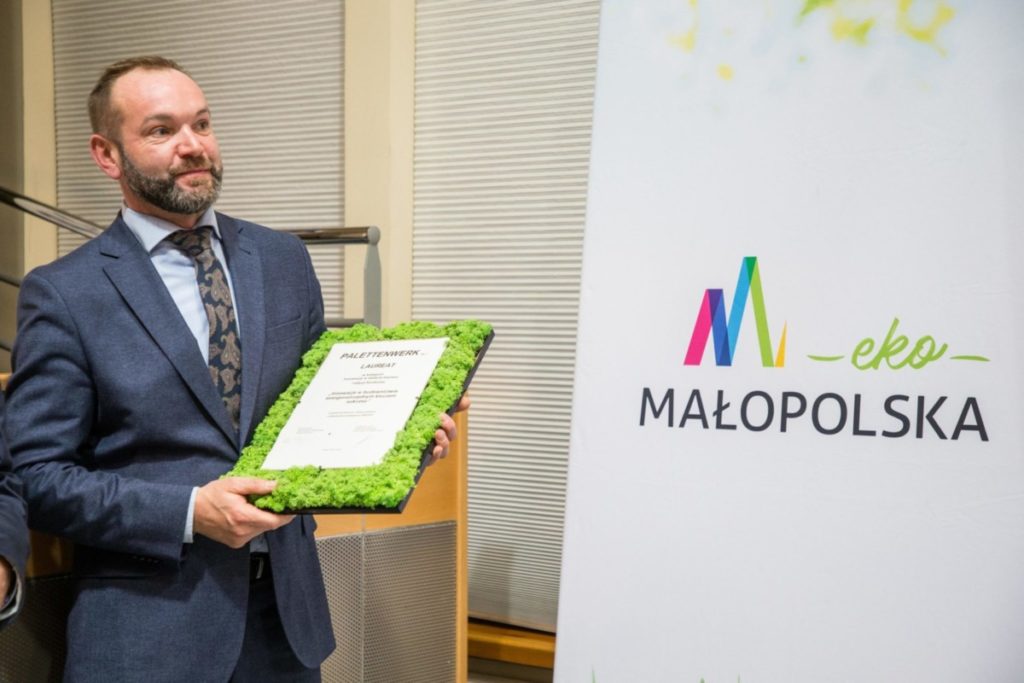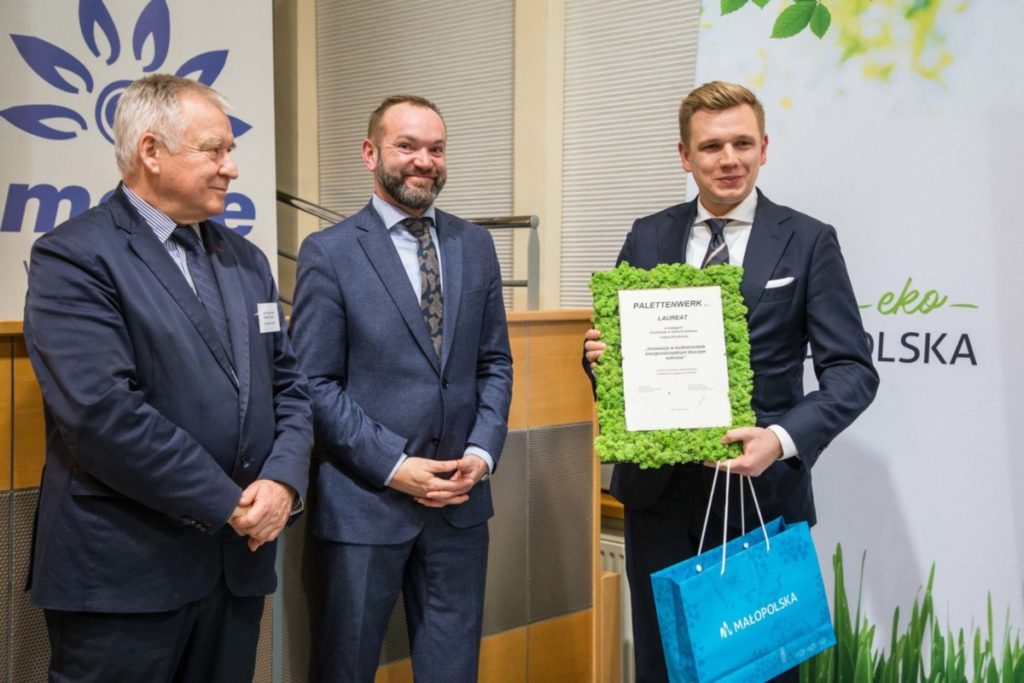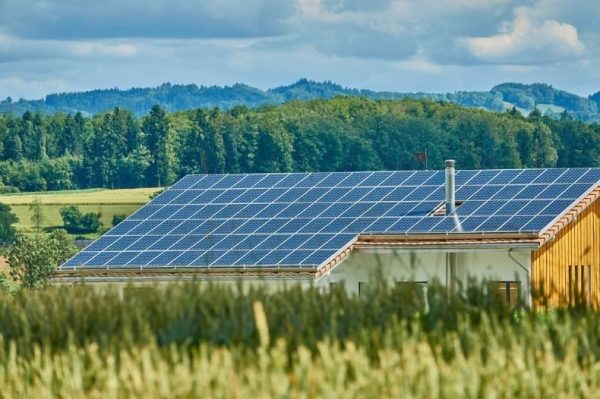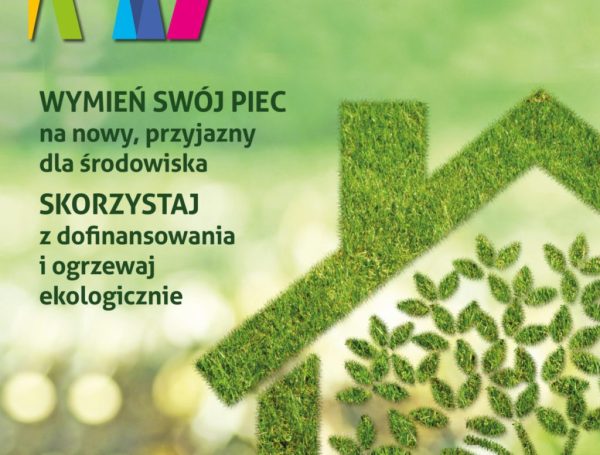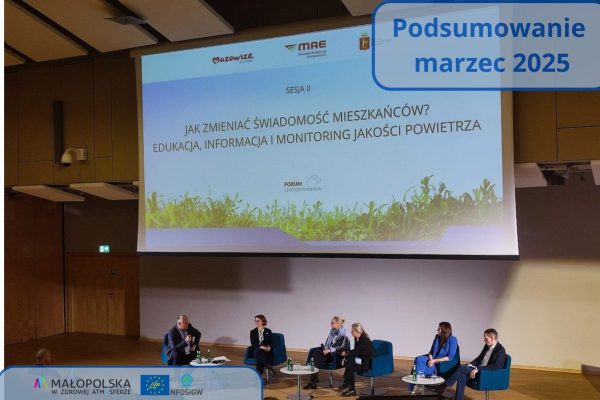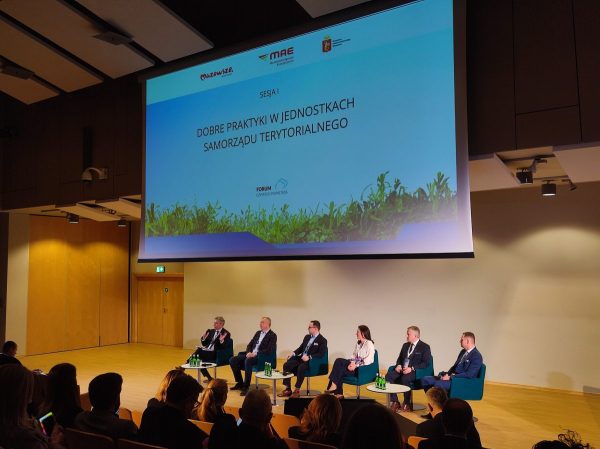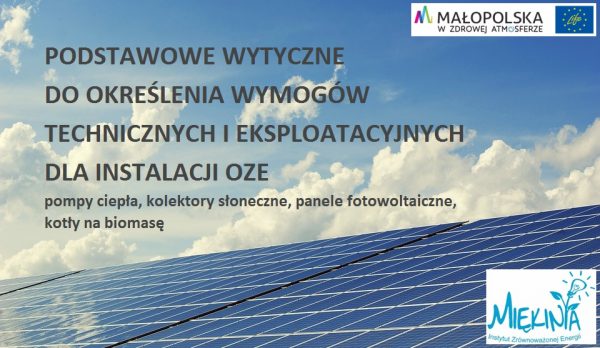The final of the competition “Innovation in energy-efficient construction – the key to success”
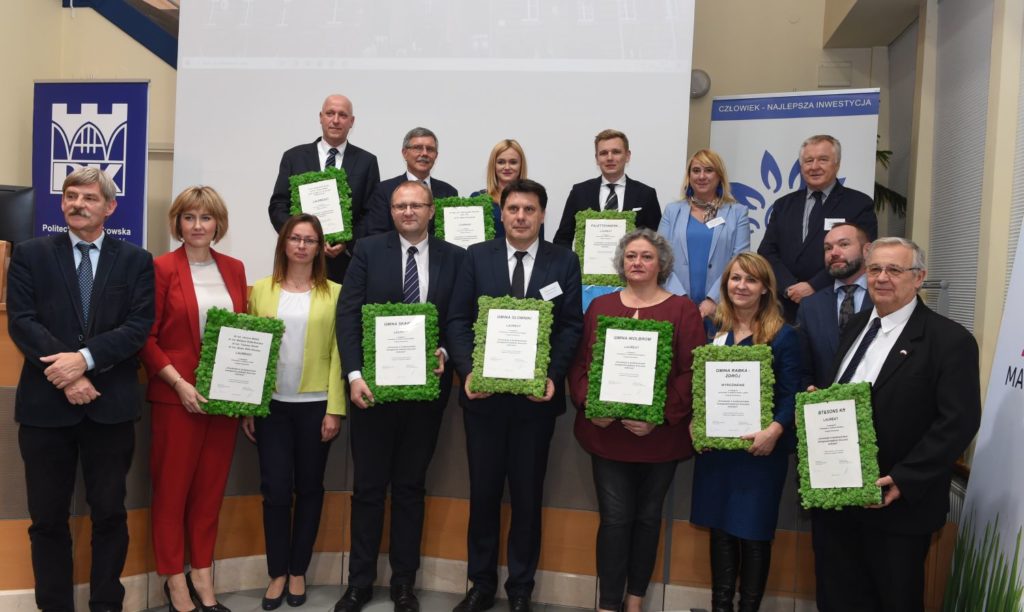
The aim of the competition was to promote technologies, production solutions and organisational solutions in the field of energy efficiency and air quality. There were 29 applications to participate in the competition. The Jury awarded 9 prizes.
On 20 November, during a festive gala at the Krakow University of Technology in the conference and exhibition pavilion “Kotłownia”, the competition winners were awarded. The winners received diplomas from the hands of Professor Tadeusz Tatara – Vice-Chancellor for Science, and Filip Szatanik – Deputy Director of the Department of Environment of the UMWM.
Winners in the Local Government category
Słomniki Municipality
The municipality realised activities in the framework of the sustainable development programme of the municipality. It reduced low emissions and energy consumption costs by constructing 4 public utility buildings using the passive method. About 95% of municipal public buildings (30 public public service) were thermo-modernized.
Within the framework of the activities, eco-managers employed under the LIFE programme obtained funds for replacement of old fossil fuels and purchase of energy-efficient heating sources.
Skawina Municipality
The municipality implemented a Local Social Assistance Programme – thermomodernisation of single-family residential buildings.
In the programme, the municipality chooses the most optimal technical solution. These include the elimination of an old solid fuel boiler for a new low-emission heat source, together with measures to reduce the building’s energy demand.
Wolbrom municipality
The municipality has conducted energy modernisation of public buildings in the municipality with the use of RES. In addition, it conducted thermomodernisation of 7 schools in the municipality.
Rabka Municipality – special award. Creating an “Air Quality Plan for Rabka-Zdrój health resort”, based on expert support.
Winners in the Business category
ML System company
“Photovoltaic glass with quantum dot coating”
The quantum dot layer glass, thanks to its function of generating energy from renewable sources, significantly improves the energy balance of buildings or means of transport. Thanks to its unique characteristics (such as absorption of UV and IR radiation, conversion into eclectic energy, high transparency in the visible range, temperature stability, resistance to external factors: high humidity, high or low PH, operation at low light intensities, low weight), the glass has better thermal and energy insulation properties and has the additional function of generating free solar energy.
PalettenWerk
“Modular, wood-based prefabricated construction”
Modular wooden houses are very modern and energy-efficient buildings produced in the prefabrication system. Advanced partition technology and high quality construction and insulation materials ensure comfort and very good performance of the houses – including low energy consumption, air tightness and optimal air circulation. An innovative housing estate of wooden modular houses has already been built in Libertów near Krakow.
Company BT&SONS Kft
“Active insulation of buildings”
The active building insulation method consists in placing a coil in the building envelope, in the insulation layer in a specially designated plane, connected to a coil in the ground. In this closed circuit, a solution of glycol and water is circulated by means of a small circulating pump. As a result of this solution, the thermal inertia of the building is increased, which reduces heat loss of the partition in winter and cools the building in summer. The solution can be applied to new and existing buildings. Solution implemented in Hungary.
Winners in the Science category
Cracow University of Technology
The team composed of: Aleksander Prociak, Prof. of PK, PhD, Maria Kurańska, PhD
“Open cell polyurethane-polyisocyanurate (PUR-PIR) foams”.
The solution concerns the application of modifiable cooking oils, constituting municipal waste, for the production of sprayable thermal insulation materials, applicable in energy-saving and passive buildings. The introduction of bio-components into the synthesis of PUR-PIR materials is important from the point of view of innovativeness – this type of solution is currently not used in the development of thermo-modernization materials.
Silesian University of Technology
Team composed of: Dr. Eng. Janusz Belok, Dr. Eng. Bożena Orlik-Kożdoń, Dr. Eng. Tomasz Steidl, Dr. Eng. Beata Wilk-Słomka
“Integrated System for Insulating a Building and Heating Ventilation Air”.
The system is made up of panels with a core of thermo-insulating material in the following variants: a start duct panel with inlet holes (for air), an intermediate duct panel and a collector panel. The system is complemented by duct profiles connecting the collector plates with the ventilation system, as well as glue and connectors for fixing the panels on the façade. Insulation of the building starts with sticking the conversion duct plates with air intake openings to the external surface of the building’s external walls, to which the intermediate plates are then stuck. The system culminates with collector plates which collect the heated air and enable it to be transferred to the mechanical ventilation system.
Cracow University of Technology
Team composed of Aleksander Byrdy, D.Sc., Tomasz Majka, D.Sc., Prof. Krzysztof Pielichowski, D.Sc.
“Insulation anchor for fixing of building façade cladding”.
The solution concerns the introduction to the market of new anchors for natural stone and architectural concrete, manufactured of high-strength engineering plastic. The application of the solution will allow for a significant reduction in thermal losses in buildings with stone and concrete cladding by reducing thermal bridges created in traditional fixings for cladding made of heavy façade materials.
Konkurs towarzyszył trzeciej edycji konferencji „Jakość powietrza a efektywność energetyczna – JPEE 2019”. Wydarzenie dotyczyło problematyki zanieczyszczeń oraz innowacyjnych technologii służących ochronie klimatu. W konferencji wzięli udział przedstawiciele nauki, przemysłu i samorządów.
